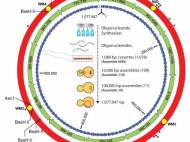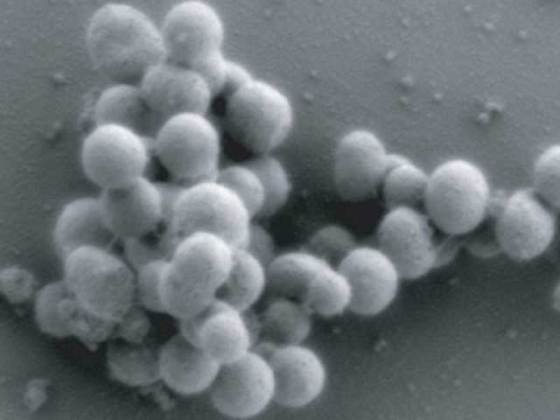Scientists made a living cell entirely controlled by synthetic DNA
 Although the potential benefits of the technology could have have been over-stated, and it could introduce the dangers posed by synthetic organisms, it is a scientific landmark that deserved to become an article in our archive. Scientists in the US have succeeded in developing the first living cell to be controlled entirely by synthetic DNA. The researchers constructed a bacterium’s “genetic software” and transplanted it into a host cell. The resulting microbe then looked and behaved like the species “dictated” by the synthetic DNA.
Although the potential benefits of the technology could have have been over-stated, and it could introduce the dangers posed by synthetic organisms, it is a scientific landmark that deserved to become an article in our archive. Scientists in the US have succeeded in developing the first living cell to be controlled entirely by synthetic DNA. The researchers constructed a bacterium’s “genetic software” and transplanted it into a host cell. The resulting microbe then looked and behaved like the species “dictated” by the synthetic DNA.
The team was led by Dr Craig Venter of the J Craig Venter Institute (JCVI) in Maryland and California, and managed to combine the previous successes to make a synthetic bacterial genome, and to transplant the genome of one bacterium into another. By combining those two techniques, scientists were able to create what they call a “synthetic cell”, although only its genome is truly synthetic. The researchers copied an existing bacterial genome. They sequenced its genetic code and then used “synthesis machines” to chemically construct a copy.
Named Mycoplasma mycoides JCVI-syn1.0, the synthetic cell is the proof of principle that genomes can be designed in the computer, chemically made in the laboratory and transplanted into a recipient cell to produce a new self-replicating cell controlled only by the synthetic genome. The researchers hope eventually to design bacterial cells that will produce medicines and fuels and even absorb greenhouse gases.
“We’ve now been able to take our synthetic chromosome and transplant it into a recipient cell – a different organism. As soon as this new software goes into the cell, the cell reads [it] and converts into the species specified in that genetic code,” said Venter. “This is the first time any synthetic DNA has been in complete control of a cell.”
The new bacteria replicated over a billion times, producing copies that contained and were controlled by the constructed, synthetic DNA. Venter and his colleagues are already collaborating with pharmaceutical and fuel companies to design and develop chromosomes for bacteria that would produce useful fuels, clean up polluted water and new vaccines. They also plan on designing algae that can capture CO2 and give off hydrocarbons for use in refineries.
“This is an important step we think, both scientifically and philosophically. It’s certainly changed my views of the definitions of life and how life works,” Venter said. “It’s part of an ongoing process that we’ve been driving, trying to make sure that the science proceeds in an ethical fashion, that we’re being thoughtful about what we do and looking forward to the implications to the future.”
The research brought up some serious ethical questions. Aside from “playing God” and creating life, the team’s work also challenges the traditional views of what life is and further blurs the line between living organisms and machines. For more detailed info about the research, read the paper: Creation of a Bacterial Cell Controlled by a Chemically Synthesized Genome (PDF).










Leave your response!